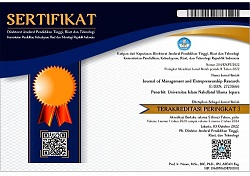Retraction, Withdrawal, & Correction Policy
Table of content
 Policy Statement
Policy Statement Content Integrity and Maintenance
Content Integrity and Maintenance Article Retraction
Article Retraction Article Withdrawal
Article Withdrawal Article Correction
Article Correction Article Removal
Article Removal Article Replacement
Article Replacement
Policy Statement
Content Integrity and Maintenance
Article Retraction
- There are major scientific issues that would invalidate the conclusion of the article, for example there is clear evidence that the findings are unreliable either as a result of misconduct (e.g. data fabrication) or honest error (e.g. miscalculation or experimental error).
- The findings have previously been published elsewhere without proper crossreferencing, permission, or justification (i.e. cases of redundant publication).
- There are ethical violations such as plagiarism (taking someone else's ideas, processes, results, or words without giving appropriate credit including those obtained through confidential review of others’ manuscripts) or inappropriate authorship.
- An article requiring potential retraction is brought to the attention of the journal editor.
- Journal editors should follow step-by-step guidelines according to the COPE flowchart (including evaluating responses from the authors of the articles in question).
- The final decision as to whether to retract is then communicated to the author and, if necessary, any other relevant bodies, such as the author's institution on occasion.
- The retraction statement is then posted online and published in the next available issue of the journal.
Article Withdrawal
- If the author(s) requests withdrawal of the manuscript(s) during the Submission stage (initial review), the author(s) will be blacklisted on JMER for 1 year and the submission declined.
- If the author(s) requests withdrawal of the manuscript(s) during the Review stage, the author(s) will be penalized by paying USD100 per manuscript.
- If the manuscript(s) is withdrawn after it is accepted for publication, the author(s) will be penalized by paying USD200 per manuscript.
- If an article has been published as an "Article in Pres" containing a scientific error, a redundant publication, or publication ethical violation, it will be "Withdrawn" from the JMER site. Withdrawal means the HTML and PDF content simply states that the article has been withdrawn. In this case, the author(s) will be penalized by paying USD250 per manuscript.
- If the author(s) does not agree/not accept a fine, the author and his affiliates will be blacklisted for publication in JMER for 3 years.
Article Correction
- A small part of an otherwise reliable publication reports flawed data or proves to be misleading.
- The Author or Contributor list is incorrect (e.g. a deserving Author has been omitted or someone who does not meet authorship criteria has been included).
- If the new material is additional to the accepted article, it must be submitted for peer review as a new manuscript, referring back to the original;
- If the new material should replace the original content of the accepted article, the editor may consider the publication of an erratum or a corrigendum.
Article Removal
Article Replacement























